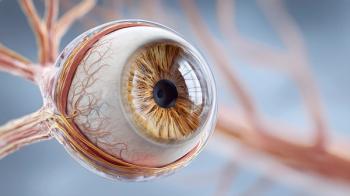
Therapy for Blurry Vision Shows Positive Results
Phase 3 trials show CSF-1, a low-dose pilocarpine, met clinical endpoints for improving presbyopia, or age-related blurry vision.
A second eye drop that treats age-related blurry vision will soon be submitted to the FDA for review. Orasis Pharmaceuticals has released
Orasis plans file a new drug application with the FDA for CSF-1 in the second half of this year. If CSF-1 is approved, Allegan’s Vuity could have a competitor. Orasis's therapy is a lower dose version and trials have has shown it lasts up to eight hours, two hours longer than Vuity.
In both trials, CSF-1 achieved statistically significant 3-line or more gain in distance-corrected near visual acuity (DCNVA) and no loss of 1-line or more in distance visual acuity. Pooled across the two studies, 40% and 50% of participants demonstrated these gains one hour after dose 1 and on hour after dose 2, respectively. It started to work as early as 20 minutes and the benefit lasted up to 8 hours after dose 1.
The most common treatment-related adverse events of headache and instillation site pain. Of all CSF-1 participants, only 2.6% reported moderate treatment-related adverse events. All other adverse events were mild.
These results were achieved with a minimum effective dose of pilocarpine hydrochloride at 0.4%, which is less than one-third the concentration of the commercially available treatment. CSF-1 working by improving near visual acuity through pupil modulation, resulting in a “pinhole effect” and an increase in the depth of field, increasing the ability to focus on near objects.
These data will form the basis of a new drug application, which the company expects to file in the second half of this year.
Full results of these phase 3 trials are expected to be released closer to the annual meeting of the American Academy of Ophthalmology starting Sept. 30, 2022, according to a company spokesperson.
Phase 2b data
“We’re also encouraged that there was no negative impact on distance or night vision, which is critical when looking at the potential benefit of an investigative treatment like CSF-1 could bring to patients to help them manage in their day-to-day lives,” Marjan Farid, M.D., an ophthalmologist with UCI Health in Orange, Calif., and presenting author, said in a press release.
Additionally, a post hoc analysis of the phase 2b trial were presented in a second session. The analysis met its primary endpoint of sustained improvement, with 47% of participants showing an improvement of 20/40 visual acuity level or better consistently over an eight-hour period on day 15 following one dose of CSF-1.
Presbyopia is the loss of ability to focus on near objects as a result of the natural aging process. It occurs mostly after the age of 40 when the crystalline lens of the eye gradually stiffens and loses flexibility. There are almost two billion people globally and more than 120 million people in the United States living with presbyopia.
The first therapy to treat presbyopia was
Vuity is a daily, prescription eye drop that works lasts up to 6 hours. Vuity uses a technology allows the therapy to rapidly adjust to the physiologic pH of the tear film. It uses the eye’s own ability to reduce pupil size, improving near vision without affecting distance vision.
The FDA approval of Vuity is based on data from two pivotal phase 3 clinical studies. In both studies, Vuity met the primary endpoint of improvement in near vision in low light conditions. There were no serious adverse events in either study. The most common adverse events were headache and eye redness.
Newsletter
Get the latest industry news, event updates, and more from Managed healthcare Executive.





















































